Druidical Temples in the County of Wilts
Druidical Temples in the County of Wilts is in Prehistory.
The Druidical Temples Of The County Of Wilts. By The Rev. E. Duke (age 66), M.A. F.A.S. F.L.S. And Member Of The Archeological Institute Of Great Britain And Ireland. "Veterum volvens monumenta virorum." — Virgil. London: John Russell Smith, 4, Old Compton Street, Soho Square; Salisbury: W. B. Brodie and Co. MDCCCXLVI.

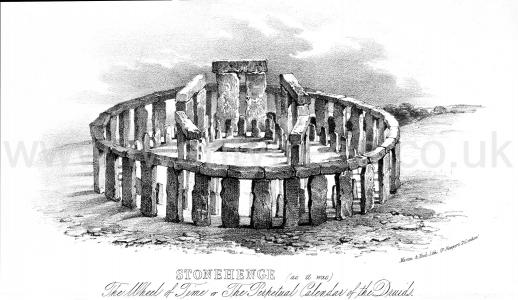
To Archaeologists Of Great Britain And Ireland; Especially To The Fellows Of The Antiquarian Society, To The Members Of The Archaeological Association, And To The Members Of The Archaeological Institute, This Book, (The Amusement And Occupation Of His Leisure Hours,) Is Respectfully Dedicated, By Their Obedient And Humble Servant, The Author. Lake House [Map], Amesbury, August 13th, 1846.
Contents:
CHAPTER I. Origin and Progress of Idolatry .... 1
CHAPTER II. On Barrows .... 9
CHAPTER III. Origin and Extent of Druidism .... 16
CHAPTER IV. Silbury Hill ..... 30
CHAPTER V. On the Serpent at Abury .... 43
CHAPTER VI. The Temples at Abury .... 55
CHAPTER VII. Temples at Abury continued — Grand Astronomical Diagram 66
CHAPTER VIII. Temples of Mercury and Venus .... 73
CHAPTER IX. Ancient British Trackway .... 83
CHAPTER X. St. Ann's Hill— Remarks on the Feudal System .... 91
CHAPTER XI. Temples of Mars and Jupiter .... 102
CHAPTER XII. Stonehenge .... 110
CHAPTER XIII. Names of Stonehenge .... 115
CHAPTER XIV. Stonehenge continued .... 126
CHAPTER XV. On the Fosse of Stonehenge, and the Stones located on it 133
CHAPTER XVI. Stonehenge the conjoint Temple of Saturn and the Sun .... 150
CHAPTER XVII. Temple of Saturn continued .... 164
CHAPTER XVIII. The Platonic Cycle .... 176
CHAPTER XIX. Summary of the foregoing Arguments, and Conclusion .... 184

Books, Prehistory, Druidical Temples in the County of Wilts Chapter I
Chapter I. Origin And Progress Of Idolatry.

Books, Prehistory, Druidical Temples in the County of Wilts Chapter II
Chapter II. On Barrows.
Books, Prehistory, Druidical Temples in the County of Wilts Chapter IV
Chapter IV. Silbury Hill [Map].

Books, Prehistory, Druidical Temples in the County of Wilts Chapter V
Chapter V. On The Serpent At Abury.
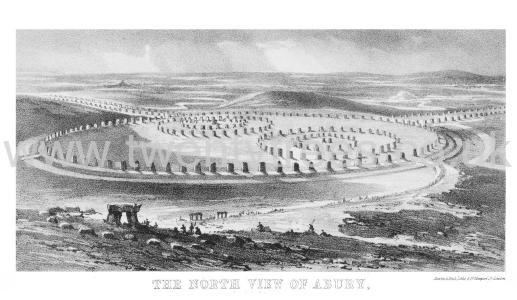
Books, Prehistory, Druidical Temples in the County of Wilts Chapter VI
Chapter VI. The Temples At Abury.
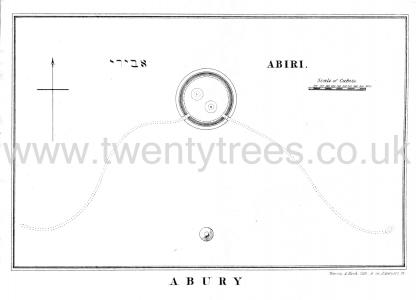
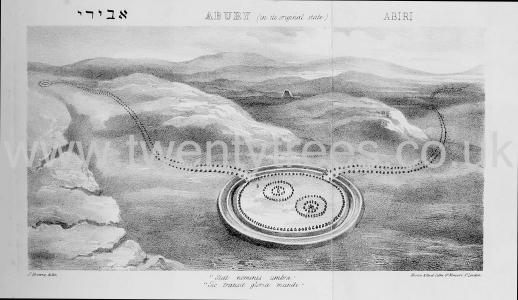
Books, Prehistory, Druidical Temples in the County of Wilts Chapter XII
Chapter XII. Stonehenge.
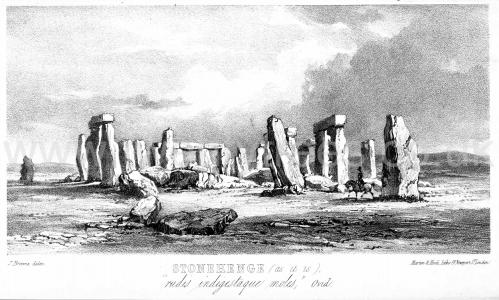

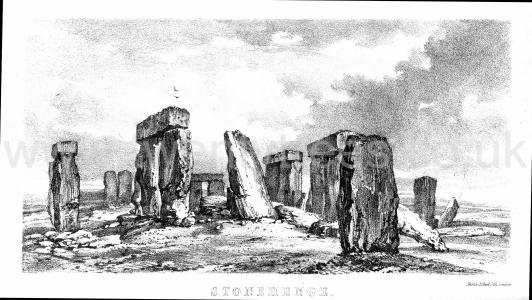
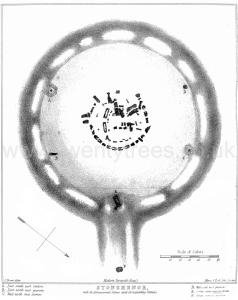
Books, Prehistory, Druidical Temples in the County of Wilts Chapter X
Chapter X. St. Ann's Hill — Remarks On The Feudal System.
In the last chapter, after having visited the temple of Venus, we retraced our steps, and conducting my fellow travellers down the meridional line, we repassed the temples ot the Sun and Moon at Abury, so curiously fenced in by the line of the powerfully protecting Serpent, composed of the sacred and mystic Four; we repassed also the marvellous Hill of Silbury, so well pourtraying the earth as the centre of the universe in this astonishing astronomical diagram; and we traversed the verdant and lofty downs, which intervened between the aspiring Hill of Silbury, and the temple of Mercury ; and as we pursued our onward course, I sought to beguile the tedium of the way by describing the ancient British trackway, whose lengthened course we were treading, and which ran parallel with this series of venerable temples. We are now arrived again at the temple of Mercury, seated on the extreme verge of the hills, bordering on the vale of Pewsey: behold the glorious view which extends its limits up and down that vale ! and, directing your eye to the south, you will, in the centre of the vale, three miles from hence, see Marden [Map], the temple of Mars, and again on the brow of the hill on the opposite side of the vale, three miles further distant, you will perceive the temple of Jupiter (Casterley Camp [Map]) ; thus does the scope of human vision take in at one view the three temples of Mercury, Mars, and Jupiter, ranged on the meridional line ; but, if my fellow travellers do not feel a little wearied with our long walk, I do; and therefore let us take our seats on this verdant tumulus, the temple of Mercury, which has been already described, and, whilst we regale ourselves with the charming view before us, I will commune on things present, past, and to come, and thus do I say:
The Greeks and Romans were wont to dedicate the high lands impending over the ocean to the several tutelary deities, whose protection from danger was fervently implored by the passing and adventurous seaman, and the summit of the hill was customarily crowned by the fane of the special deity, to whom it was so dedicated. The like usage prevailed on land, and the traveller, who was plodding his weary way through the vale, sought the shielding aid of the deity, whose temple was seated on the projecting promontory. In the revolution of time race has succeeded to race, custom to custom, and objects of veneration have supplanted one another ; but the country people naturally love a sound familiar to their ears ; we may readily suppose, therefore, that when they had to seek a new patron for their hill, they culled from the Romish Calendar the one whose name most nearly resembled that to which they had been accustomed. In accordance with this view, I cannot divest my mind of the notion, (but I do not propound it as a fact,) that, in the days of the Romans, the shrine of the chaste Diana held her sway over the hill, now indeed rendered sacred by the aid of the modern St. Anne, the mother of the Holy Virgin.
I cannot help thinking, that from Diana and Dian i i were struck off the appellations Anna and Ann, (the additional 'n' being subsequently added,) and that the feriæ , or festival of the goddess was superseded by the fair, as now held, of the saint. I shall now be told that the fane of the hunting goddess would never have been seated on this high and bare hill, that the Romans would have given her a habitation amidst the woods and groves, but here Callimachus comes to my aid. In his beautiful Hymn on Diana he thus feigns her, with these requests, to entreat her father Jupiter [Greek Text], — also give me all hills and mountains." The father of gods and men gently kissed his suppliant daughter, and her request was granted. Horace, likewise, depicts her as "Montium custos nemorumque virgo:" the virgin guardian of the mountains, and of the groves." He here evidently intends a contra-distinction: she is the montium custos, whether they be clothed or not with woods and groves ; she is the nemorum custos, whether they cover the sides and top of the rising mount or whether they extend their shadows over the lowly glen or expansive vale. But what does Virgil say—
Aut per juga Cynthi
Excercet Diana choros, quam mille secutæ
Hinc atque hinc glomerantur Oreades.
Here we have in this beautiful picture Diana weaving the mystic dance, followed in her train not by the Dryades and Hamadryades the nymphs of the woods and groves, but by the Oreades, the mountain nymphs ; we see her thus disporting herself with her blithe companions, not on the summit of a wooded hill, but on the ridge of a barren mountain. Tournefort, in his voyage to the Levant (Ozells Translation, Vol. I. p. 323) says thus: "Mount Cynthus, whence Apollo was called Cynthius, is an ugly hill crossing almost the whole island (Delos) obliquely; this mountain properly speaking is nothing but a ridge of granite." Thus much for the peculiar resort of the hunting goddess to woods and groves!
Thus are the ancient poets in my favour, and it appears to me, that such a situation for the temple of the heathen goddess was most appropriate, when we consider, that the hill of St. Anne overlooks the vale of Pewsey, which, now a woody region, must have been in early days in a state of forest, where strayed the wild boar and the red deer, both now extinct in this country, in a state of nature, but the tusks of the one, and the horns of the other, are not unseldom met with in the barrows scattered on the Downs, betraying the favourite amusement and occupation, as well as the luxurious living, of our heathen ancestry. It is very true, that the Abori- gines of our land possessed not the means of giving additional relish to their feasts of venison, a food most meet for gods and men, by the aid of good old wine, as according to Virgil, the Trojans did, when they thus feasted on the shores of Lybia, "Implentur veteris Bacchi, pinguisque ferinæ but then they could aid their repast by libations from the purling brook, or bubbling spring, and I ever held with Pindar, that "[Greek text], that, where men love health, where they seek to preserve a mens sana in corpora sano," to possess a mind and body alike free from disorder, that there "water is the best of all liquors," and my own experience has ever demonstrated to me this truth.
A large fair, alike devoted to pleasure and to business, is annually held on this hill [Tan Hill, Wiltshire [Map]]. The day appropriated to the festival of Saint Anne stands in the Romish Calendar as the 26th of July, but, on the institution of the new style, it naturally fell on the 6th of August, on which day that anniversary of joy and trade, Tan Hill Fair, is now ever kept. This fair of Saint Anne, the successor nearly in name and nature (as I suppose) to the feriæ of the goddess Diana, is well I known by fame throughout the county of Wilts, whose rural population recognize as Tan Hill Fair, that which is evidently the fair of St. Anne's Hill. The corruption of St. Anne's Hill to Tan Hill is curious, but obviously thus. St. Anne's Hill — S'tan Hill— Tan Hill.